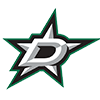As a former professional poker player, gin rummy hustler, backgammon aficionado and now daily fantasy sports shark, I've always found enjoyment in solving intellectual puzzles and exploring the "game" behind the game. The search and implementation of the most optimally advantageous decisions is my definition of fun, much to the dismay of friends who attempt to engage me in them purely as social activities. (Either I play for blood or not at all!)
DFS, at least to me, is not as much a short-term game of picking players day after day, but a long-term game of developing the optimal playing philosophy. While anyone with a halfway decent knowledge of a sport and an hour of research can construct a winning lineup on a given day, it's those who combine that with a solid grasp of the fundamental theory behind the game that profit consistently over time.
For this reason, I believe relying too heavily on "player pick" articles hinders your progress of getting better at DFS. They're great for a start, to get your feet wet for a slate, but they ultimately become a crutch that prevents you from walking on your own, profitably. And once you are able to assess the dynamics of a slate - from a "game behind the game" perspective - you're more likely to find yourself successfully landing on an optimal lineup construction and winning consistently.
While it's quite arrogant of me to proclaim I am somehow an "expert" for this weekly Q&A column, I
As a former professional poker player, gin rummy hustler, backgammon aficionado and now daily fantasy sports shark, I've always found enjoyment in solving intellectual puzzles and exploring the "game" behind the game. The search and implementation of the most optimally advantageous decisions is my definition of fun, much to the dismay of friends who attempt to engage me in them purely as social activities. (Either I play for blood or not at all!)
DFS, at least to me, is not as much a short-term game of picking players day after day, but a long-term game of developing the optimal playing philosophy. While anyone with a halfway decent knowledge of a sport and an hour of research can construct a winning lineup on a given day, it's those who combine that with a solid grasp of the fundamental theory behind the game that profit consistently over time.
For this reason, I believe relying too heavily on "player pick" articles hinders your progress of getting better at DFS. They're great for a start, to get your feet wet for a slate, but they ultimately become a crutch that prevents you from walking on your own, profitably. And once you are able to assess the dynamics of a slate - from a "game behind the game" perspective - you're more likely to find yourself successfully landing on an optimal lineup construction and winning consistently.
While it's quite arrogant of me to proclaim I am somehow an "expert" for this weekly Q&A column, I would at least consider myself a "student of the game" - always learning, experimenting, analyzing - and appreciate sharing the intellectual exercises with you. Hopefully, we both gain some insight in the process. Onto this week's question!
How should you think about larger slates, especially if they're full of heavy favorites. Do you need to have at least one player from every favored team even if it's tough on your budget? - Cheev, @MasterCheev
The primary differentiating factor between large and small slates is the ratio of roster positions versus the size of the player pool and total available points to be scored.
Concerning the first variable (player pool) for example, a three-game slate will have 66 players who can be reasonably selected (starters) for your 8-man roster - about 12 percent of the total pool. As a comparison, on an eight-game slate, this percentage decreases to about 4.5 percent.
This means your player exposure on smaller slates can be more vast and/or balanced for your salary allotment. Less choice equals easier decisions, but ownership levels will be higher and lineups overlap much more. On the other hand, you will have thinner and/or unbalanced player exposure on larger slates. More choice equals harder decisions, but ownership levels will be lower and lineups overlap much less.
While the player pool dynamics are typically understood by most DFS players, I find little is discussed about the second variable - the point pool, though they go hand in hand. The more games there are on a slate, the more points will be scored from all the games cumulatively - and the same effect applies to the ratio of your eight roster positions (on DK/FD in the USA).
The difference, though, is that this cumulative number of points is not finite like the player pool. It can be drastically affected by goals, assists and bonuses (wins, clean sheets). This is why it's essential that your first bit of research for a slate focuses on the sportsbook money lines and totals. Assuming they're sharp on average more times than not, this information will tell you the most about the likely distribution weight of the point pool towards specific teams and/or games. In corollary, the players involved in the games with higher lines and totals will have more opportunities to score fantasy points over players in games with a lesser weighted point pool share. In common DFS parlance, this is the exact reflection of optimizing for "ceiling" or "upside."
This point pool variable also applies to "floor" (the lowest/safest likely points accumulated by a player). Regardless of the specific teams playing, once you take away goals, assists and bonuses, the range of points scored cumulatively by players in an individual game is fairly small in a sport such as soccer (the same applies to basketball, but not to baseball). Unless players' feet are nailed down to the pitch, every game will have shots, crosses, tackles, fouls and so forth (peripherals) even if no goal is scored. While the disparity in specific games comes primarily in the relative strength and playing style of the sides, the range of peripheral points scored comparatively between them is typically only about 20 percent.
This means that even on larger slates with heavy favorites, the distribution weight of the point pool is still not so lopsided that it dramatically diminishes the share earned from an even-sided low total game. The players involved in those lower-rated games will indeed have fewer opportunities to gain part of a bigger point pool share, but if they accrue a high percentage of their team's peripherals, the difference in raw points could be a wash (15 percent share of 100 points = 15 vs. 25 percent share of 60 points = 15).
From a more practical view, smaller slates are about picking the right players. Since there aren't as many to select from, and fewer points to go around as a whole, the key is optimizing your lineup towards those who will likely absorb the bulk of them for their given team. Be more inclined to play the "stud" from each game in a cash lineup, and be much more inclined to be contrarian in a GPP lineup, if you're looking to win it.
Larger slates, however, are about picking the right matchups. Since there are many to select from, and more points to go around as a whole, the key is optimizing your lineup towards those who will likely play a major role to gain the points in those matchups. Be heavily inclined to play the "stud" from those teams in a cash lineup. Consider a second (or even third) from the same side, but only after weighing their point share against that of a key player in a lesser matchup, especially if the salary difference is significant. Since larger slates inherently have lower ownership levels due to the player pool size - therefore the less of a need to go completely contrarian by rostering a ton of underdogs - in a GPP lineup be more inclined to either play additional players (stack) from the right matchups or one player from those team(s) other than the "stud."
The approach to tackling small slates versus large slates is quite similar to that in poker with short-handed tables versus full-ring games. Even the best in both fields, DFS and cards alike, can have trouble with the change in playing environments. Some actually specialize after learning they excel in one over the other. My advice? Learn what works for you, experiment with your approach and as always, analyze your results!
If you would like to submit a question for this weekly column, feel free to either post it in the comment section below, tweet it to me @blenderhd, or email me at jordan@fantasyflush.com.









































